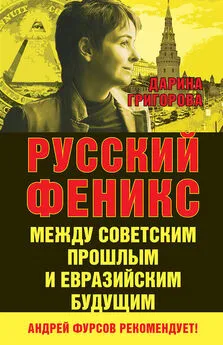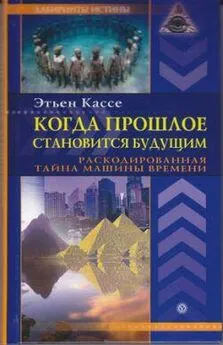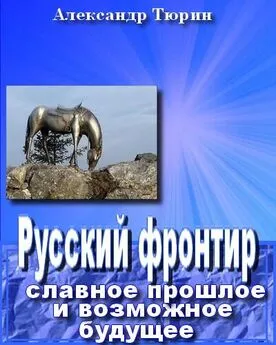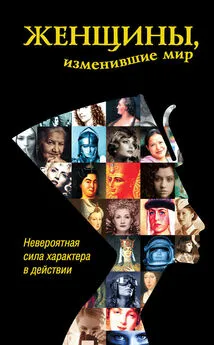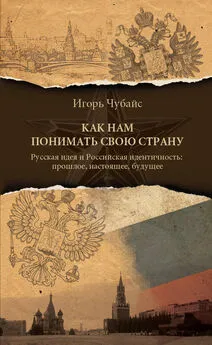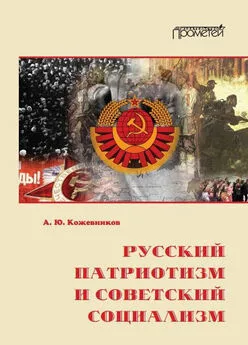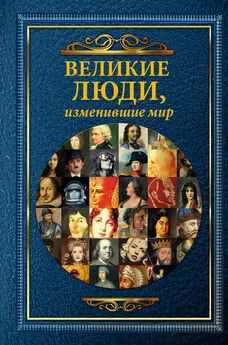Дарина Григорова - Русский Феникс. Между советским прошлым и евразийским будущим
- Название:Русский Феникс. Между советским прошлым и евразийским будущим
- Автор:
- Жанр:
- Издательство:Книжный мир
- Год:2018
- Город:Москва
- ISBN:978-5-6040153-9-1
- Рейтинг:
- Избранное:Добавить в избранное
-
Отзывы:
-
Ваша оценка:
Дарина Григорова - Русский Феникс. Между советским прошлым и евразийским будущим краткое содержание
Русский Феникс. Между советским прошлым и евразийским будущим - читать онлайн бесплатно ознакомительный отрывок
Интервал:
Закладка:
The second external test for geopolitical turbulence emerged in Russia after Putin’s decision to run for a third term as President in 2012. It occurred again in the following year but this time at the most sensitive place on the Federation’s border, in Ukraine — the Ma-jdan in 2013–2014. Two integration projects clashed on Ukrainian land: the Eurasian one (regional, of Russia) and the trans-Atlantic one (global, of USA). It is to determine the situation in the next century and is a fight for the Old Continent, faced with a choice between a Trans-Atlantic agreement with USA and a ‘Big Europe’, from Vladivostok to Lisbon, with Russia.
While Russia’s Eurasian project is regional (the European Union plus the newly-established Eurasian Economic Union on the principle of multipolarity, in partnership with BRICS, etc.), the Trans-Atlantic project is global (USA plus EU, plus Eurasia, after the fragmentation of Russia, being the wealthiest region in terms of resources and closest to Asia, with faster economic growth than Europe, on the principle of corporate monopolarity). China will stay with the winner in order to outlive it.
The accession of Crimea (March 2014) is a historical fact, which not only separates post-Soviet from Eurasian Russia but also marks the end of the Tong 20 th century’ and the beginning of the 21 st one, when the integration projects will dominate over the national one.
Geopolitical-Eurasian identity of post-Soviet Russia: Big Europe or Big Eurasia?
In his brochure The New World Order (1940), Herbert Wells says that before 1914 his generation imagined that the Franco-German War (1870–1871) and the Russo-Turkish War (1877–1878) were the ‘final conflicts between Great Powers’ and that a ‘balance of power’ had been established [429] H.G. Wells. The New World Order, 1940. «I think that in the decades before 1914 not only I but most of my generation-in the British Empire, America, France and indeed throughout most of the civilised world-thought that war was dying out. So it seemed to us. It was an agreeable and therefore a readily acceptable idea. We imagined the Franco-German War of 1870-71 and the Russo-Turkish War of 1877-78 were the final conflicts between Great Powers, that now there was a Balance of Power sufficiently stable to make further major warfare impracticable».
. In 1940, at the beginning of WWII, Wells called it ‘the Chamberlain-Hitler war’ [430] H.G. Wells. The New World Order, 1940. «The war, the Chamberlain-Hitler War, is being waged so far by the British Empire in quite the old spirit. It has learnt nothing and forgotten nothing. There is the same resolute disregard of any more fundamental problem. […] For all that period the League of Nations has been the opiate of liberal thought in the world».
, and the League of Nations, which failed to prevent the conflict, ‘the opiate of liberal thought in the world’.
How did the English fiction writer see the world order: as ‘practical unification’, ‘the end of the period of the sovereign states’, ‘an age of transition’ and a ‘fundamental need of revolutionary reconstruction’ [431] H.G. Wells. The New World Order, 1940. «…we are living in the end of a definite period of history, the period of the sovereign states. As we used to say in the eighties with ever-increasing truth: «We are in an age of transition»; «The war is incidental; the need for revolutionary reconstruction is fundamental».
. For Wells, the concept of ‘revolution; is not so much romantically idealized but rather perceived as an inevitable change for a ‘profound social revolution, profounder event than the revolution attempted by the Communists in Russia’ (for him, the latter has failed due to ‘impatience, violence […] intellectual insufficiency’); ‘The cosmopolitan revolution to a world collectivism, which is the only alternative to chaos’ with a declaration for human rights [432] H.G. Wells. The New World Order, 1940. «Political federation, we have to realise, without a concurrent economic collectivisation, is bound to fail. The task of the peacemaker who really desires peace in a new world, involves not merely a political but a profound social revolution, profounder even than the revolution attempted by the Communists in Russia. The Russian Revolution failed not by its extremism but through the impatience, violence and intolerance of its onset, through lack of foresight and intellectual insufficiency. The cosmopolitan revolution to a world collectivism, which is the only alternative to chaos and degeneration before mankind, has to go much further than the Russian…».
.
For Herbert Wells, however, ‘collectivism’ is synonymous with ‘globalism’ This is an English-styled globalism. New redistribution of the wealth of the Earth transpire behind the beautiful outlines of a new world order protecting the human rights. This is the consecutive re-colonization that we now witness in the epoch of ‘globalism’. In his book Russia in the Shadows, H.G. Wells shares his personal impressions from the Bolshevik revolution. He points out the reason for the West’s disappointment from the October 1917 events: ‘The collapse of the civilized system in Russia into peasant barbarianism means that Europe will be cut off for many years from the mineral wealth of Russia, and from any supply of raw products from this area, from its corn, flax, and the like. It is an open question whether the Western Powers can get along without these supplies. Their cessation certainly means a general impoverishment of Western Europe.’ [433] Герберт Уэллс. Россия во мгле. – В: Собрание сочинений в 15-ти томах. Том 15. Москва, 1964, с. 99. http://lib.ru/INOFANT/UELS/ russia.txt
.
The colonial attitude of the West to the East (Rus-sia-Eurasia) did not change even after the cold phase of the Cold War (I use the term ‘phase’ because, after 1991, the Cold War did not end but was transformed as geopolitical confrontation and competition, which is inevitable in the history of international relations and can be divided into phases but not finalized). The Eurasian project of post-Soviet Russia is a reaction to this reserved stereotype of colonial interest to the East. It is a response to the English (American)-styled globalization, on the one hand, and, on the other, it is a specific Eurasian version (EEU) of the European-styled globalization (EU).
The perception of EEU (Eurasian Economic Union) as a neo-Soviet project is a fruit of the ‘Russian complex’ of the West (Russia is huge, mysterious and unpredictable), on the one hand, and, on the other, a matter of competition — economic and geopolitical — for the resources of the wealthiest region of Eurasia. Herbert Wells defines this complex with the British as ‘chronic Russophobia with regard to their vast apportions in the East’ [434] H.G. Wells. The New World Order, 1940.
.
From Russian perspective, there is the mirror ‘European complex’, which is to be traced back in the 18 th century during the Europeanization and modernization under Peter I. Europe mostly as a cultural concept. It has always been a benchmark of national identification for the Russian social thinkers, whether positive (Western-oriented Liberals) or negative (Slavophils, Pochveniks-Conservatives and Western-oriented Socialists). This specific intellectual schizophrenia of the ‘Eastern’ and the ‘European’ in the Russian national self-awareness among the intellectuals has persisted in modern Russia as well.
Russia’s Eurasian geopolitical identification is also related to the reaction of the neo-liberal wave of depersonalization of nations and the traditional family as a norm of conduct. The East, as an important component of Russia and a conservative guardian of the patriarchal society, even after its modernization by the Soviet authority in the style of the White Sun of the Desert, can in no way accept this neoliberal attempt for destruction of the national identity and its transformation into a corporate one, nor the depersonalization of the traditional family in an automated society of elfs, Conchitas and other images, close not only to the show business in Eurasia but not to the public norms. Conservatism, however, is not an ideology either of Russia or of any of the EU member states, i.e. this is the other major difference with the USSR as there is no ideological doctrine.
The Eurasian project of the geopolitical identity is also a reaction to the mild de-Christianization of the European Union. Europe is a Christian civilization and culture but the European Union denied to make this fundamental principle formal but rather began a mild policy of gradual marginalization of the Christian values through the neo-liberal model multicultur-alism, giving up the Christian model of multicultural-ism. Europe’s de-Christianization will inevitably lead to de-Europeanization of the Old Continent because the European high culture is a symbiosis of Antiquity and Christianity (the topics in painting, music, architecture, etc.) unless this tendency is changed. The Eurasian project is also a reaction to the de-Christianiza-tion in the Middle East (in a hard and, unfortunately, irreversible version through the physical destruction of ancient Christian cultures).
The Eurasian project is a reaction to the Salafi Islam, particularly regarding the current quasi-terrorist Islamic State. It is a part of the strategy of discrediting the Islam as a traditional religion, its polititicization and depersonalization (within a few month in 2014, the international Islamic formation destroyed Sufi cemeteries, mosques (not only Shia but Sunni as well) and everything, related to the Arab culture. The only thing they accept is the black flag. Any other trace of civilization is subject to destruction in their formal ideology and a policy of genocide against Yazidis,
Assyrians and other ancient nationalities on these lands.
The danger from this tendency affects mostly Russia and Kazakhstan. The Tatarstan youth in Russia are an object to Salafi interest. In the recent years there have been targeted murders of moderate Imams and their replacement with radical ones. The local youth receive their training in Cairo and other religious centres, from which they return having acquired a specific idea about Islam, which is quite remote from its moderate version in Tatarstan; Russia will only now try to set up its own educational Islamic centres in order to stop this wave of neophytes with unpredictable political actions but this would take time. Kazakhstan, on its part, is jeopardized by the Islamism of its southern neighbour, Uzbekistan.
It is interesting to see the place of Soviet identity in post-Soviet Eurasia. In Russia, Kazakhstan and Belarus, there are three different views of the Soviet history in terms of post-Soviet identity. Russia, on the one hand, has kept the melody of the Soviet anthem of 1943 because this is the music of victory, 9 May, a sacral holiday for all Russians and Rossiyans, irrespective of their national identity, social differences, from the whole political spectrum. On the other hand, however, Russia is afraid of the Soviet past outside the Great Patriotic War and does not observe 7 November any longer. It was unsuccessfully replaced with 4 November (which, although meant as a Day of Unity, has acquired the opposite connotation due to the Russian marches). This escape from 7 November is pointless (even in the new concept of the textbook of Russian history the term ‘Great October Revolution’ and the preceding ‘February Revolution’ are removed and summarized as ‘Great Russiyan Revolution’).
Читать дальшеИнтервал:
Закладка:
